How Canada could become a green building superpower and build 3.5 million homes
A manifesto from UK Architects Declare provides a useful template.
There is a lot of optimism, even on LinkedIn, after the recent Canadian election. Toby Heaps, publisher of Corporate Knights Magazine, writes:
On Monday, Canada elected a Prime Minister (Mark Carney) with uncommon conviction who also knows how to make money flow. Time to skate to where the puck is going. The boldest play Canada can make is to forge a soup-to-nuts clean energy superpower, from critical minerals and batteries to smart grids, financial wizardry and engineering know-how. We have all the ingredients to do this.
I would add that we have the architecture, engineering, planning and landscape architecture know-how to build 3.5 million housing units with appropriate local technologies and materials. We have done this kind of thing before; That’s David Crombie, Mayor of Toronto from 1972 to 1978, standing in front of the St. Lawrence neighbourhood, which was built under his watch. According to a 2001 University of Calgary study,
The St. Lawrence neighbourhood was initiated as a response to the changes made in federal, provincial, and municipal housing policies in the early 1970s. The federal government’s National Housing Act was revised to reflect the shift in federal policy from urban renewal and public housing to new neighbourhoods containing mixed-income, non-profit housing. New programs such as the Neighbourhood Improvement Program and Land Banking Program promoted the revitalization of existing neighbourhoods and the provision of housing for those with moderate to low incomes… The Federal Government also played a significant role in the development of St. Lawrence. They created land-banking and non-profit housing programs, which provided the financing and legislative mandate to make St. Lawrence a reality.
Four levels of government (Toronto was still part of Metropolitan Toronto), 16 different developers, and 25 different architects “provided diversity in building form as a result of different interpretations of the design guidelines.”
Canada built hundreds of thousands of units across the country, but with the rise of neoliberalism under Brian Mulroney and Jean Chrétien, policies emphasized less government intervention and more personal responsibility and market efficiency. It was an ideological shift, and it is time for a shift back.
There is no reason that Canadians couldn’t do this again. I discussed the houses behind the Carney pitch in an earlier post, CMHC releases plan books for the 21st century. They were designed before Mark Carney became Prime Minister, but they have the attributes our new housing needs in the face of climate crises and political turmoil; they are multifamily, energy efficient, have low upfront carbon emissions, and they can be built with local materials.
We don’t have to start from scratch to figure this out, either. Last year, UK Architects Declare produced a terrific road map, Building Blocks, as a call to action for the next UK government. They face many of the same problems we do in Canada, minus the annexation threats.
“UK Architects Declare are painting a bold vision for a regenerative and circular future where waste is seen as a valuable asset; nature as integral part of our cities and ecosystems; and there is a bounty of jobs for everyone in the growing low carbon sector, bringing about more social justice and wealth across the nation.”
It was broken down into three sections, sitting on top of a foundation. They call it a manifesto to transform the built environment; here is my modified manifesto for Canada in the world of Trump.
1. Prioritize Resource Efficiency
Minimize upfront carbon emissions in construction. Promote the use of lightweight wood frame and mass timber construction. Eliminate underground concrete parking garages. Prioritize low-rise multifamily housing, which has far lower emissions per bedroom.
Minimize operational carbon emissions from buildings. Build to the Passivhaus standard of energy efficiency. Heat and cool with heat pumps.
Use buildings more intensively and efficiently. From the Building Blocks: “Embed a Place Principle, similar to Scotland, to encourage better use of public buildings and improve the impact of combined energy, resources and investment. Place-based planning moves away from public buildings with individual uses to multiple complementary functions e.g. a building with a library, GP surgery and Police drop-in centre.”
Implement a nationwide retrofit strategy. Accelerate low-energy retrofit. Provide more training for the retrofit sector (which Canada has been going in the wrong direction, closing schools that provide this training). See more on this in my post, For self-sufficiency and sustainability, we need more renovation and restoration.
I would add some more points to the Building Blocks:
Figure out what we need, what is enough. Live by the SER Framework. (Sufficiency, Efficiency, renewables.) “It requires a fundamental shift in mindset, moving away from the pursuit of endless growth towards a more balanced and sustainable approach that prioritizes the well-being of both people and the planet.” More: A new report explains why we must put sufficiency first
Buy Canadian. We have lots of wood. We are catching up with Europe’s sophistication in mass timber production. We could make our own wood fibre insulation. We certainly have lots of rock and could learn from the stone renaissance happening in Europe.
Go Euro with our building codes and planning rules. Currently, our building codes are almost indistinguishable from American codes, limiting single-stair buildings, which are significantly more efficient, wood construction, and cheap, small prefab elevators. We lay out big roads for big SUVS and pickups and giant USA-style fire trucks. Look to Europe for better codes.
2. Kickstart the Circular Economy
This is critical to reduce dependence on imported materials and reduce primary extraction while creating jobs.
Maximize the potential of existing buildings and infrastructure. Look at fixing what we have before building new; it takes far fewer imported resources and puts more people to work. It gives tired office buildings new life. See Let's get creative with our office-to-residential conversions and Why heritage preservation is climate action
Establish a national circular economy strategy. This is an interesting proposal from the Building Blocks:
“Establish digital and physical material banks for the resale and reuse of materials, with input from strip out and demolition contractors to rapidly transition their business model.”
This is already a nascent industry in Canada; Carly Connor has established Green Salvaged Materials, “a network of Contractors and Material Suppliers working together to accelerate the circular economy in the construction sector.” We have previously mentioned Meredith Moore and Ouroboros deconstruction, which “salvages valuable building materials with a full-circle approach to material recovery.” This could become standard practice with the next point from the Building Blocks Manifesto:
“Mandate fixed and escalating percentages of material reuse in construction. Allow downcycling only in special circumstances; otherwise all materials to be deconstructed (not demolished) to ensure maximum resale value.”
Provide financial incentives and tax reform to support the circular economy. In Canada, the tax system favours the destruction of buildings rather than renovation. Marc Denhez explains that for tax purposes, buildings are depreciated each year and lose about 2/3 of their book value after 10 years. If the building is demolished, the owner avoids “recapture” of the deductions, had the building been sold at a profit. “This planned obsolescence represents an inefficient expenditure of resources – financial, labour and materials – and also creates massive landfill waste annually.”
As noted in the post For self-sufficiency and sustainability, we need more renovation and restoration, renovation uses far more labour and less fancy and expensive materials that are often imported from the USA.
3 Restore social and Natural Infrastructure
The main points of the Building Blocks Manifesto that apply to Canada include developing a national green jobs strategy, reversing biodiversity loss, and, most importantly, in terms of energy and political independence,
Rethink urban planning to make sustainable and healthy lifestyles the norm for all projects:
Seek to prevent urban sprawl and car dependency by optimizing urban form, density, and low-carbon transport connections.
Seek to identify the barriers to walking and cycling, the local needs for amenities or services and the active travel networks between these.
Seek to identify climate threats (e.g. heatwaves and flooding) and provide opportunities to support climate resilience.
As noted in the post, If we want economic independence from the USA, we should build more bike lanes, not rip them out, walkable and bikeable communities are less dependent on imported resources. “if we are going to be truly independent of the USA, we have to stop buying their oil, gas, and pickup trucks.”
The Architects Declare Building Blocks report is not exactly analogous to circumstances in Canada, but the essential points resonate. It is a bold vision, as is Mark Carney’s. Canada has to take this opportunity to change the way we do things, to stop following the USA’s patterns of development, and avoid being dependent on USA-made materials and products.
We can do this again.
The Liberal platform begins with a look back at the postwar years:
“During and after the Second World War, Canada was facing a massive housing crisis – similar to today’s. In response, the government of the day built tens of thousands of affordable starter homes for returning veterans and their families. Prime Minister William Lyon Mackenzie King’s policies created new agencies to oversee the construction of homes, built entirely new industries, and found ways to cut costs and cut the time to build.”
Canadians did it again in the 1970s, with the St. Lawrence district being the best example of what happens when talented planners and architects work with visionary politicians and bankers.

Now, when we have a housing crisis, a political crisis and possibly an economic crisis, we can do it again, with Canadian talent and Canadian materials. We have all the building blocks we need.
Special offer!
I do not want to put up a paywall on this site, but it provides a meaningful portion of my income. So here’s a limited time offer: I will send a signed copy of the print edition of “Living the 1.5 Lifestyle” to anyone in the USA or Canada who signs up for a one-year subscription (C$50, cheap at about US$34.95 )




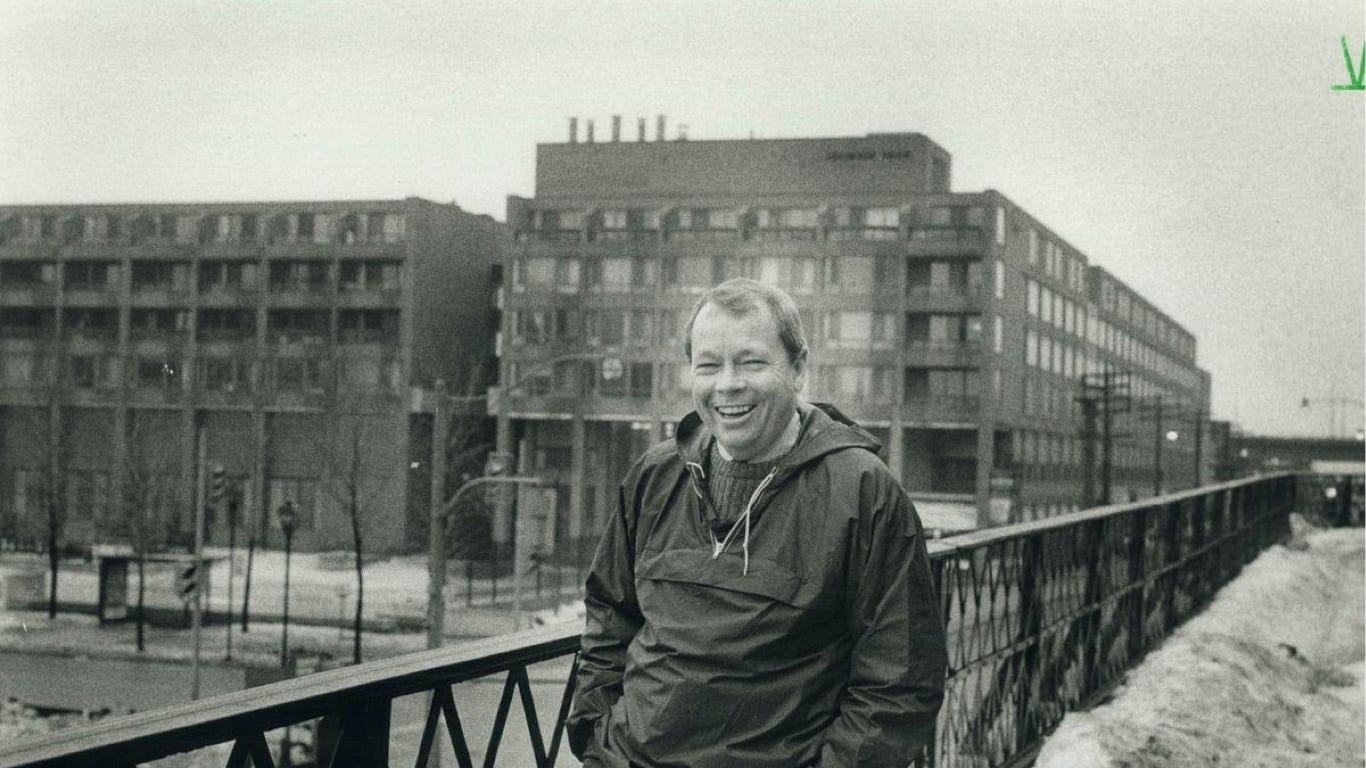
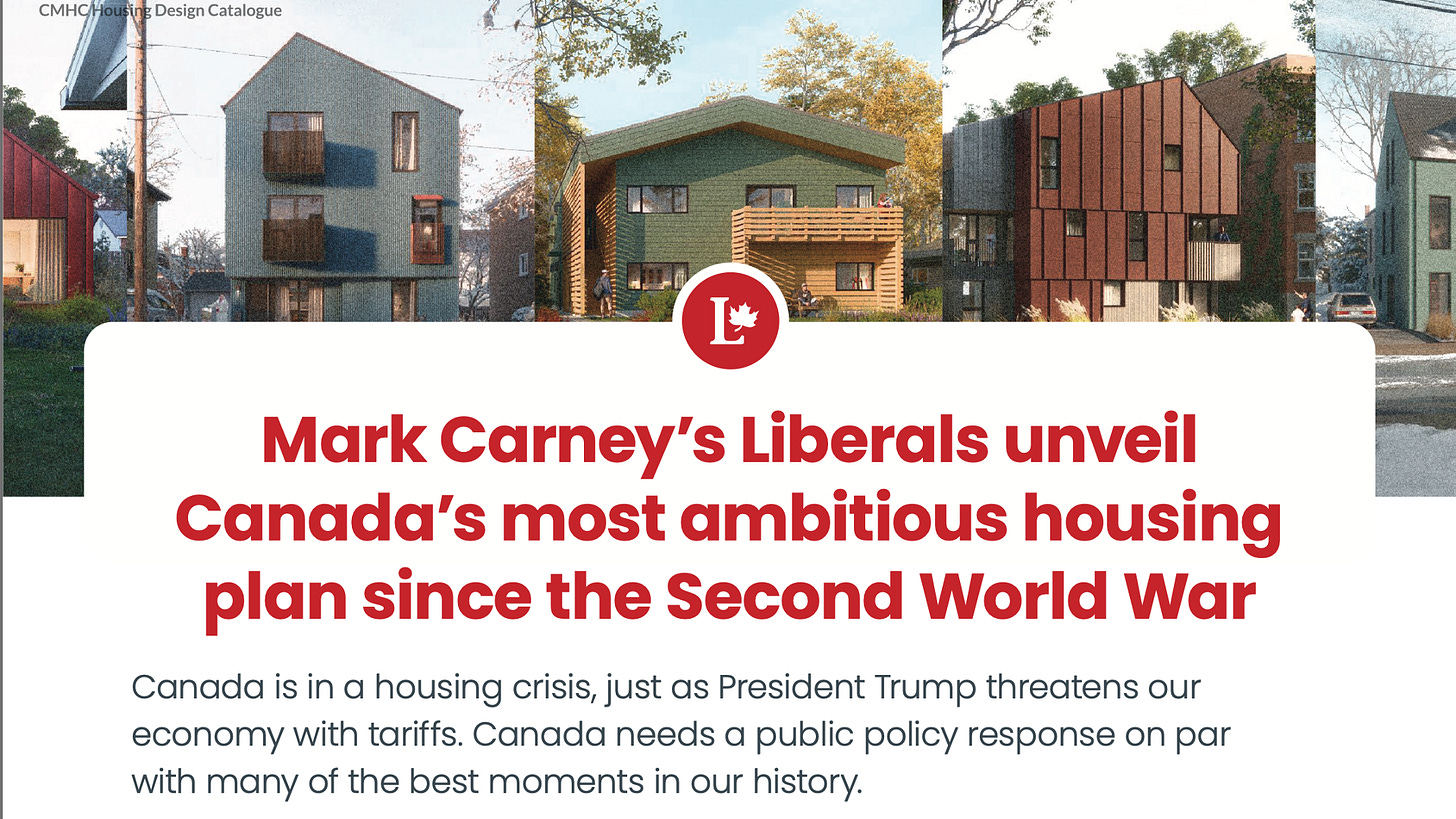
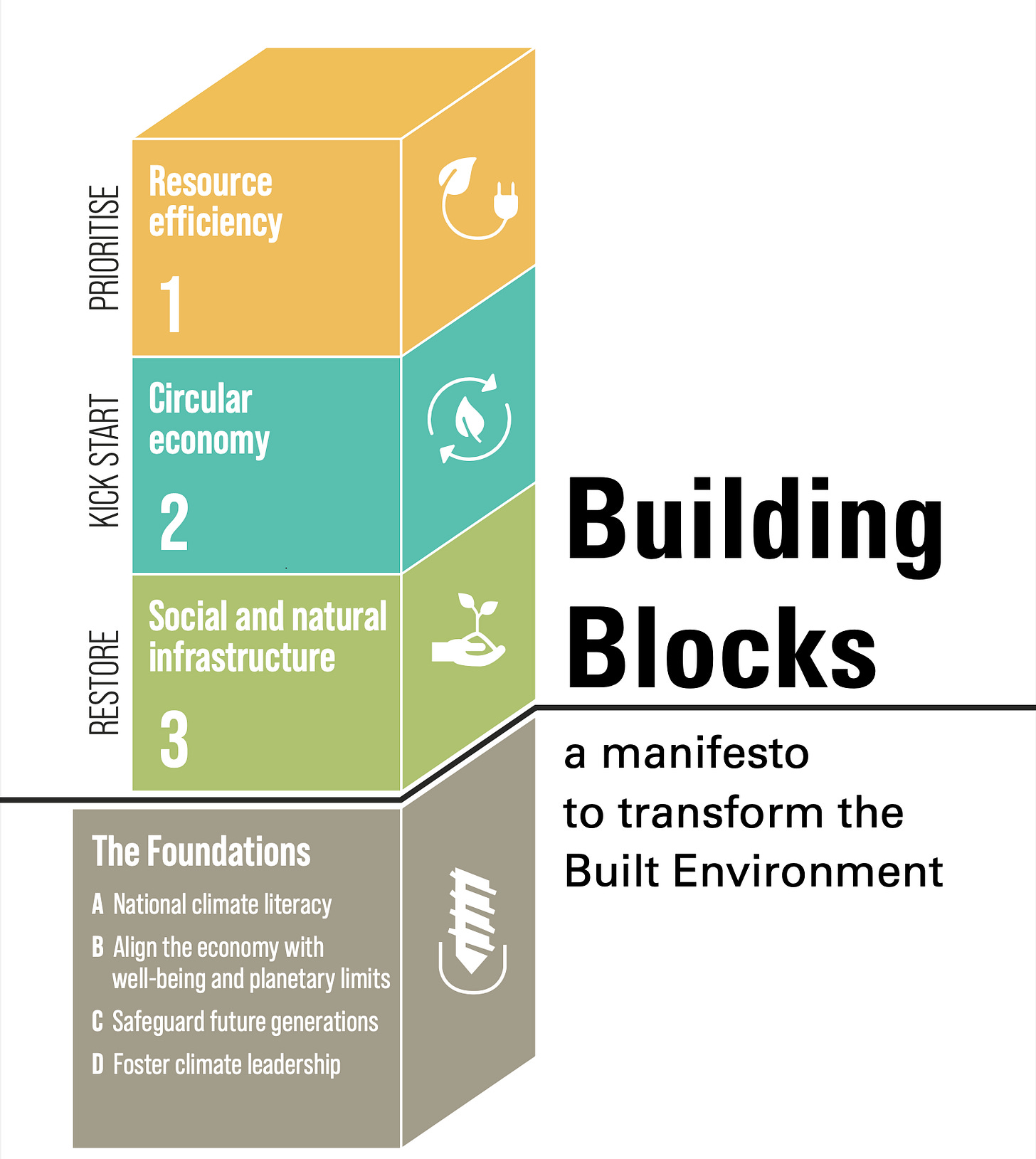


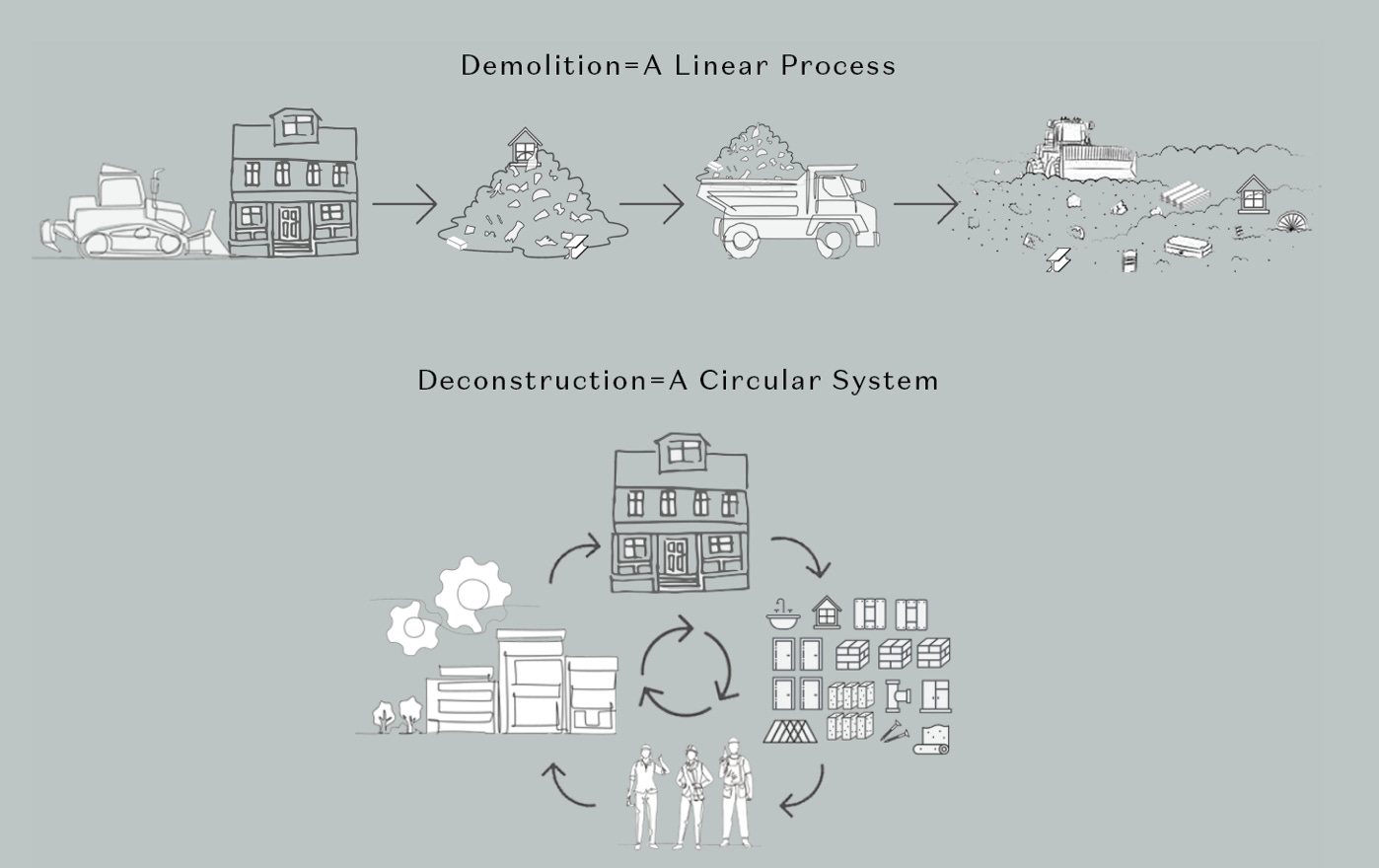
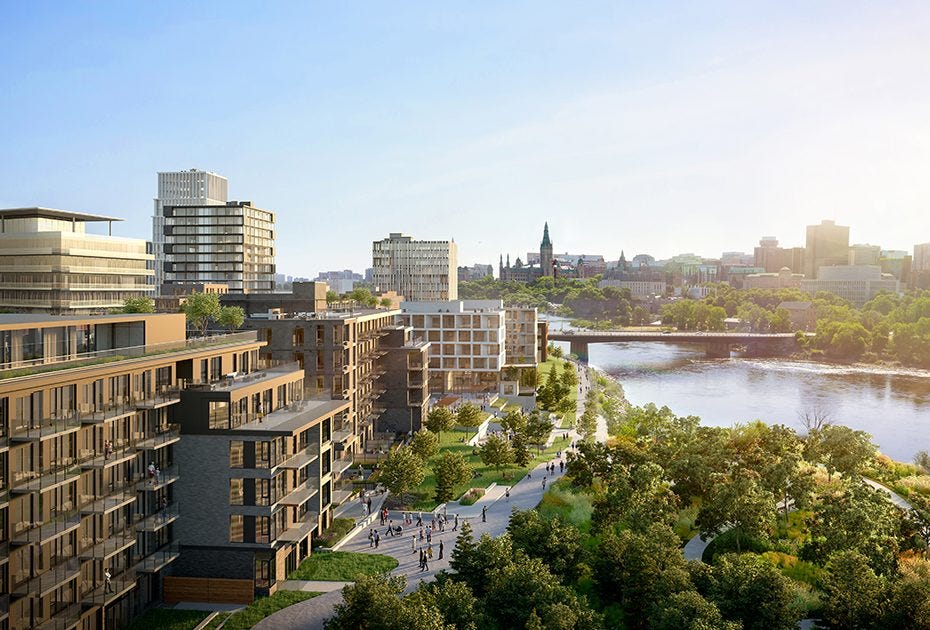



There also needs to be a pluralism in the architecture. The vast majority of the grand public prefer traditional looking buildings whilst brain washed architects prefer modern design aided and abetted by their architectural education.
To get widespread public acceptance for housing expansion the style, quality of design, appropriate density (over time) needs to be addressed.
Just as long as they make houses that everyone can afford...